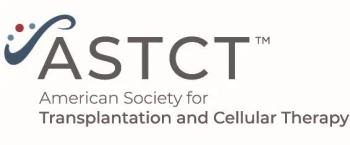
68Ga-NODAGA-LM3 May Effectively Evaluate Small Cell Lung Cancer Responses
Compared with 18F-FDG, the use of 68Ga-NODAGA-LM3 appears to favor bone and brain lesion detection among patients with small cell lung cancer.
The use of 68Ga-NODAGA-LM3 PET or CT imaging served as a potentially effective modality for response evaluation in a small cohort of patients with small cell lung cancer (SCLC), according to a presentation on study findings at the
The patient-level detection rate of disease was 100% (n = 10/10) with both 18F-FDG and 68Ga-NODAGA-LM3, with respective regional detection rates of 52.9% (n = 37/70) and 47.1% (n = 33/70). Of note, 68Ga-NODAGA-LM3 appeared to favor bone and brain lesion detection, while 18F-FDG was favorable for lymph node and abdominal metastases detection.
Regarding heterogeneity between 18F-FDG and 68Ga-NODAGA-LM3 tracers, inter-lesion heterogeneity occurred in 6 of 10 patients. Additionally, intra-lesion heterogeneity between these tracers was noted in 1 patient. When accounting for somatostatin receptor (SSTR) expression, inter-lesion heterogeneity occurred in 6 patients, while intra-lesion heterogeneity was observed in 4.
In an evaluation of peptide receptor radionuclide therapy (PRRT) eligibility, the proportion of patients who were eligible for 177Lu-DOTA-LM3 PRRT inclusion varied based on different PET-based criteria. Eligibility rates were 90% based on hottest maximum standard uptake value (SUVmax) above the liver, 60% for patient-based mean SUVmax above the liver, and 40% for 80% of lesions with SUVmax above the liver.
Among 4 patients who underwent response evaluation with 18F-FDG and 68Ga-NODAGA-LM3 PET or CT imaging, all patients demonstrated partial remission on either scan. Use of 68Ga-NODAGA-LM3 PET or CT imaging revealed bone lesions in 2 patients that were previously undetectable via 18F-FDG imaging following chemoimmunotherapy.
“68Ga-NODAGA-LM3 and 18F-FDG show similar patient-level and region-level detection. 68Ga-NODAGA-LM3 favors bone and brain lesion detection, while 18F-FDG favors lymph nodes and abdominal metastases,” lead study author Meixi Liu, from the Department of Nuclear Medicine at Peking Union Medical College Hospital in Beijing, China, stated in the presentation. “Using different PET-based criteria for PRRT inclusion, the proportion of eligible patients varies. It is worth exploring what criteria should be used for selecting PRRT candidates for [patients with] SCLC.”
As part of the study’s background, Lu highlighted an extremely poor prognosis associated with SCLC, which included a 5-year survival rate of 5% and a median overall survival of 2 to 4 months. Although 18F-FDG has demonstrated utility as a tool for diagnosis and staging, she noted that no standard second-line therapy for SCLC exists following standard frontline treatment consisting of chemotherapy plus anti–PD-1 agents. She thus noted an urgent need for new theranostic approaches in the field.
Lu detailed how SSTR may be overexpressed on SCLC tumor profiles, with 68Ga-NODAGA-JR11 previously demonstrating a patient-level positivity rate of 100% and regional-level detection exceeding that of 18F-FDG.2 Furthermore, approximately 80% of patients have an average SUVmax higher than the liver, potentially making them candidates for PRRT. This background raised some research questions regarding whether disease heterogeneity would be observed on PET scans, how heterogeneity would impact PRRT candidate selection, and how heterogeneity would influence treatment response evaluation.
In this study, patients with SCLC were randomly assigned to undergo imaging with 68Ga-NODAGA-LM3 PET/CT or 18F-FDG PET/CT with the same scanner within a week followed by imaging analysis.
The study’s outcomes included diagnostic efficacy, tumor uptake comparison, a heterogeneity analysis and PRRT selection, and treatment response evaluation. Eligibility criteria included having histologically confirmed SCLC at initial diagnosis, relapsed or progressive disease following prior treatment, or confirmed or suspected extensive disease.
“68Ga-NODAGA-LM3 PET/CT may serve as an effective modality for response evaluation in [patients with] SCLC,” Liu concluded.
References
- Liu M, Zhang Y, Yan X, et al. Staging, heterogeneity analysis and early treatment response and evaluation based on 68Ga-NODAGA-LM3 and 18F-FDG PET/CT in small cell lung cancer patients. Presented at SNMMI 2025; June 21-24, 2025; New Orleans, LA.
- Kersting D, Sandach P, Sraieb M, et al. 68Ga-SSO-120 PET for initial staging of small cell lung cancer patients: a single-center retrospective study. J Nucl Med. 2023;64(10):1540-1549. doi:10.2967/jnumed.123.265664.
Newsletter
Stay up to date on recent advances in the multidisciplinary approach to cancer.





















































































